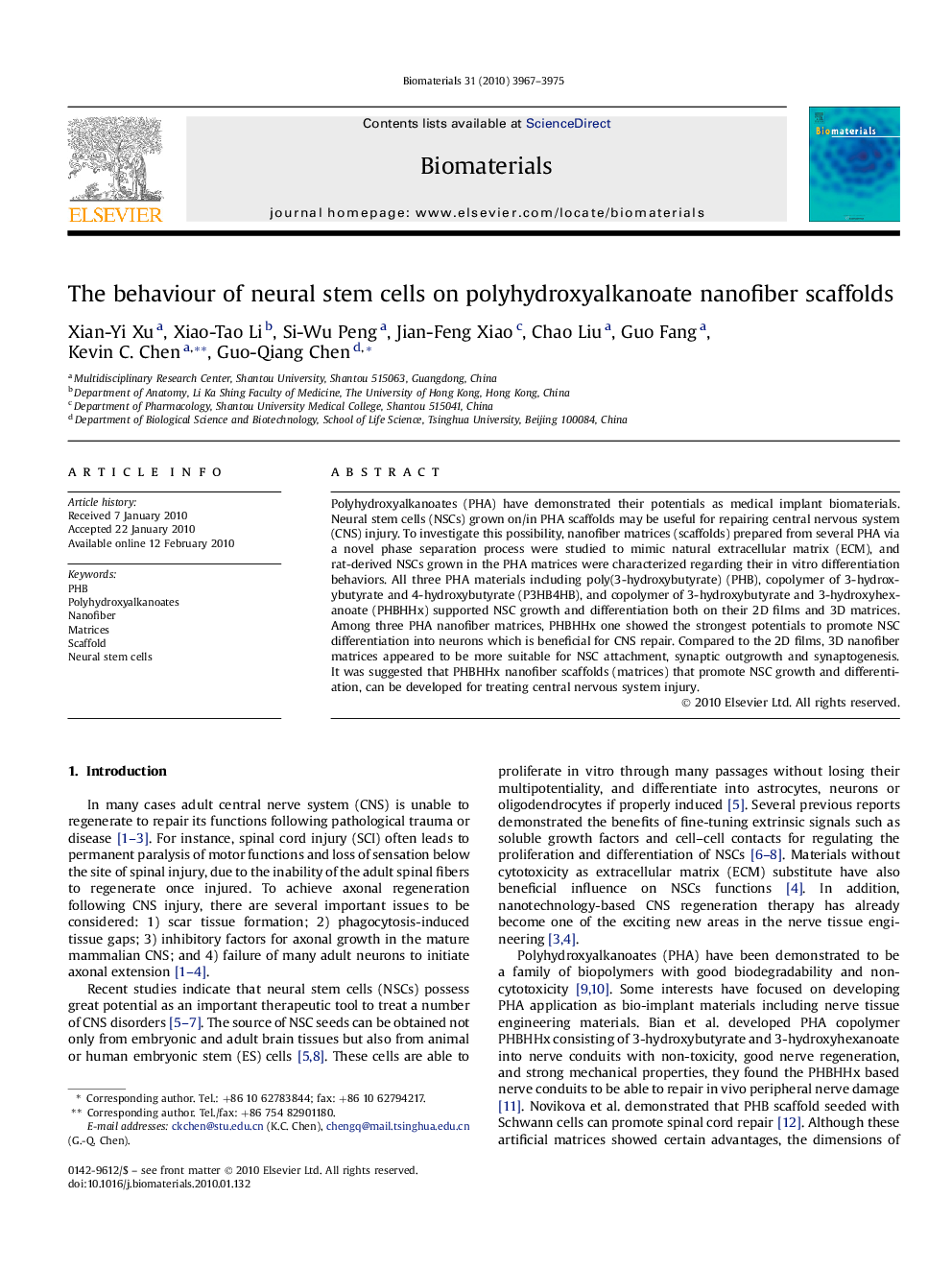| Article ID | Journal | Published Year | Pages | File Type |
|---|---|---|---|---|
| 9103 | Biomaterials | 2010 | 9 Pages |
Polyhydroxyalkanoates (PHA) have demonstrated their potentials as medical implant biomaterials. Neural stem cells (NSCs) grown on/in PHA scaffolds may be useful for repairing central nervous system (CNS) injury. To investigate this possibility, nanofiber matrices (scaffolds) prepared from several PHA via a novel phase separation process were studied to mimic natural extracellular matrix (ECM), and rat-derived NSCs grown in the PHA matrices were characterized regarding their in vitro differentiation behaviors. All three PHA materials including poly(3-hydroxybutyrate) (PHB), copolymer of 3-hydroxybutyrate and 4-hydroxybutyrate (P3HB4HB), and copolymer of 3-hydroxybutyrate and 3-hydroxyhexanoate (PHBHHx) supported NSC growth and differentiation both on their 2D films and 3D matrices. Among three PHA nanofiber matrices, PHBHHx one showed the strongest potentials to promote NSC differentiation into neurons which is beneficial for CNS repair. Compared to the 2D films, 3D nanofiber matrices appeared to be more suitable for NSC attachment, synaptic outgrowth and synaptogenesis. It was suggested that PHBHHx nanofiber scaffolds (matrices) that promote NSC growth and differentiation, can be developed for treating central nervous system injury.
